By 2050 we will have 50% wind and solar energy and there will be $9.9 trillion investment in new energy generation according to the Bloomberg New Energy Outlook 2018. The levelised cost of Solar PV is continuing to drop making clean energy the cheapest form of new power generation.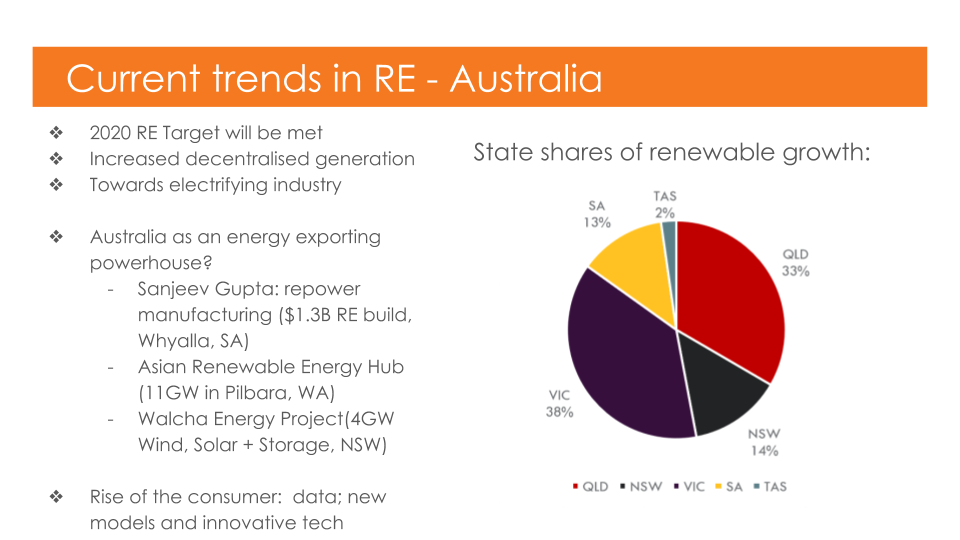
Victorian Government renewable energy policy and programs are driving much needed investment into the state and there is a great opportunity for Australia to become a renewable energy exporting superpower.
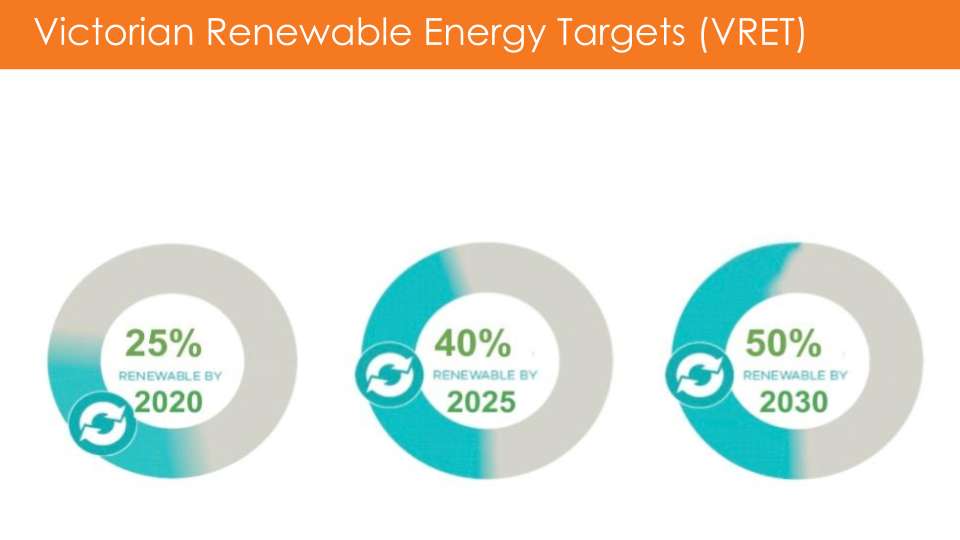
Victoria is well on its way to achieving its targets by 2020 and has set ambitious yet achievable targets for 2025 and 2050. Victoria will increase its proportion of energy generated from renewable energy from about 15% in 2014 to 50% by 2030.
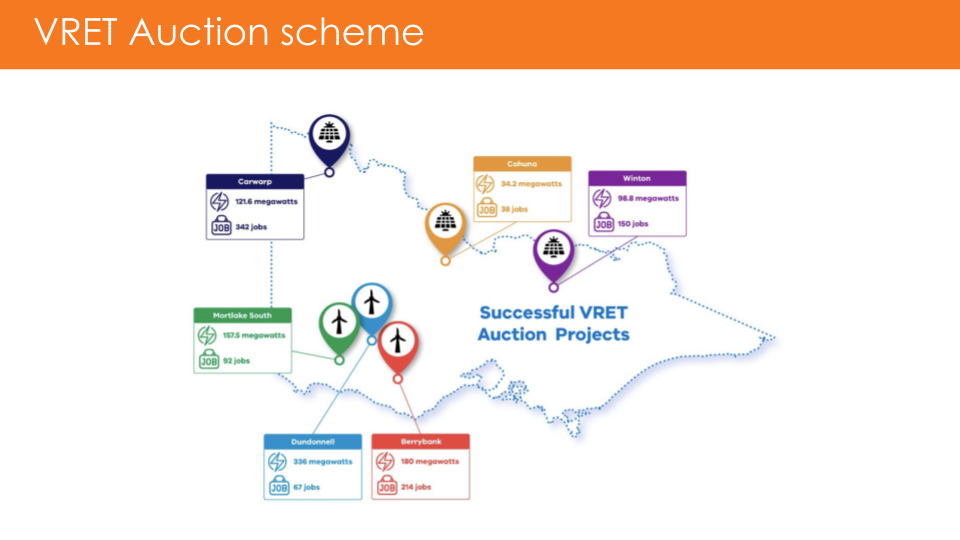
Victoria recently held Australia’s biggest renewable energy auction delivering 928MW new installed renewable energy capacity, 900 jobs and $1.3 billion capital investment into Victoria.
The Victorian Renewable Energy (Jobs and Investment) Act 2017 provides certainty to the business and investment community by enshrining the targets in law and requiring the Minster responsible to signal future investment required and report on progress.
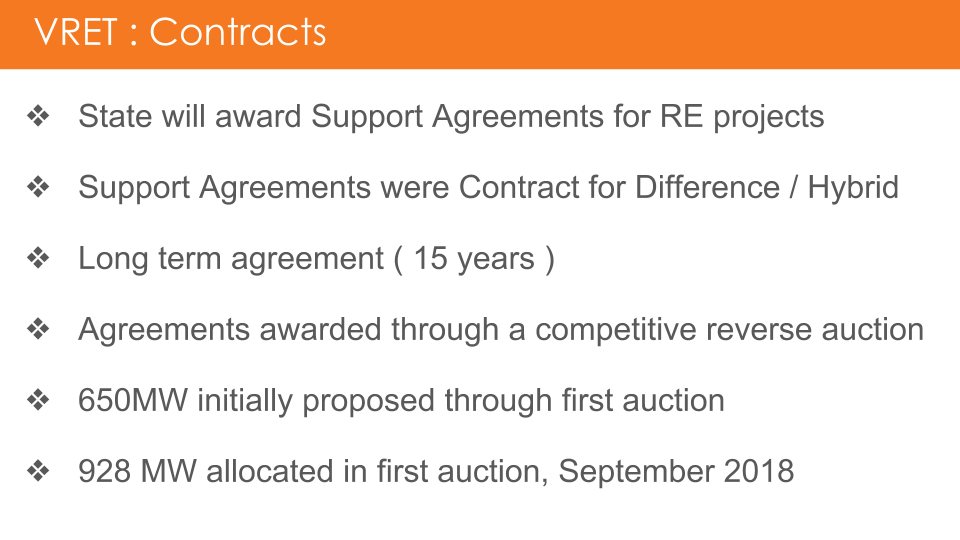
Based on the highly successful ACT renewable energy auction, VRET contracts are long terms agreements up to 15 years and are a hybrid: part contract for difference, part fixed payment(s).
In addition to $1.3 billion total investment, this first VRET auction will create 1250 construction jobs, 270 apprenticeships / trainees, 90 ongoing jobs and reduce Victoria’s greenhouse gas emissions intensity by up to 2.2 million tonnes CO2 equivalent.
VRET is not just about low cost energy generation, it delivers many shared benefits, especially to local Victorian communities.
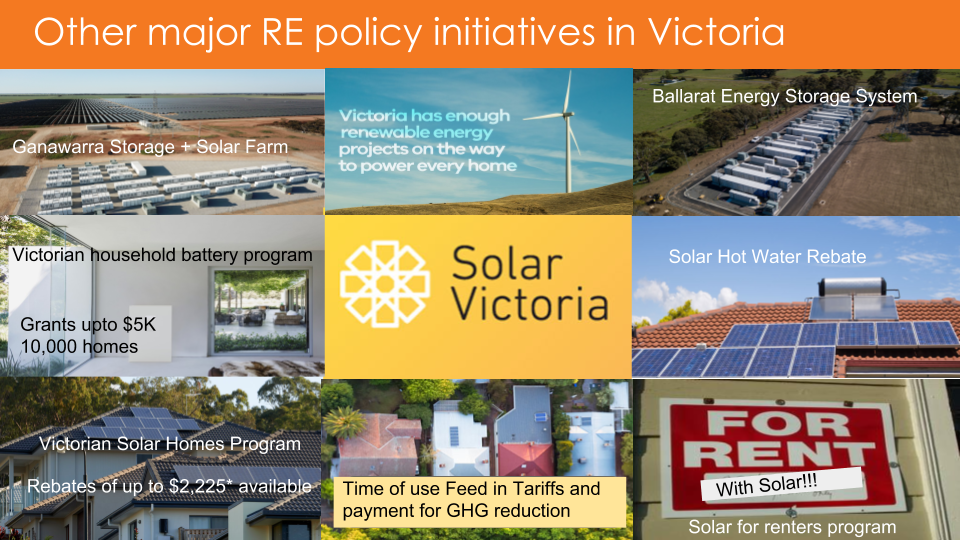
Victoria has a raft of leading edge renewable energy policies and programs, including a $1.3 billion solar homes initiative and creation of Solar Victoria based in the regional town of Morwell, Victoria.
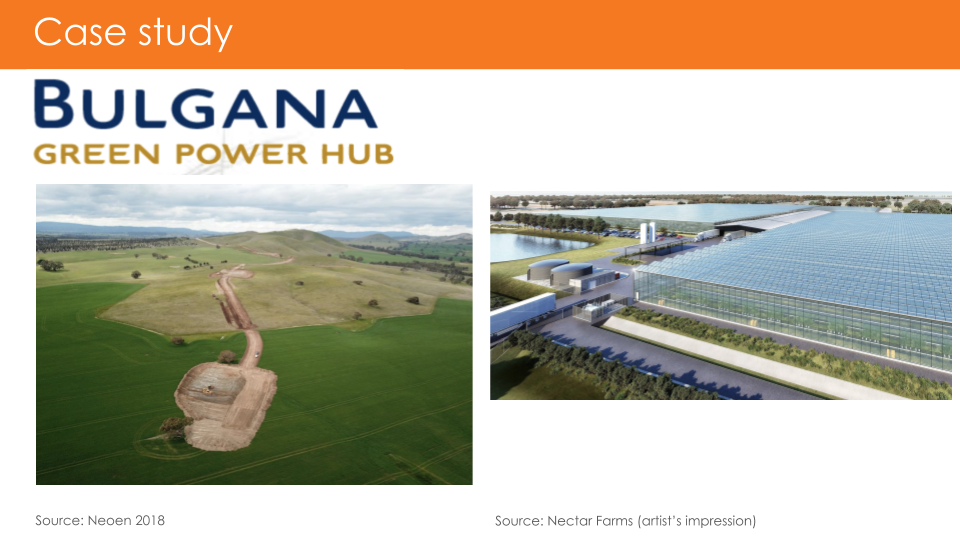
The Bulgana Green Power Hub involves an innovative food and energy partnership between the Victorian Government, Nectar Farms and Neoen (the lead wind farm and battery company). The world leading partnership is delivering the power to grow jobs, fresh produce and reliable, affordable and sustainable energy in north-west Victoria.
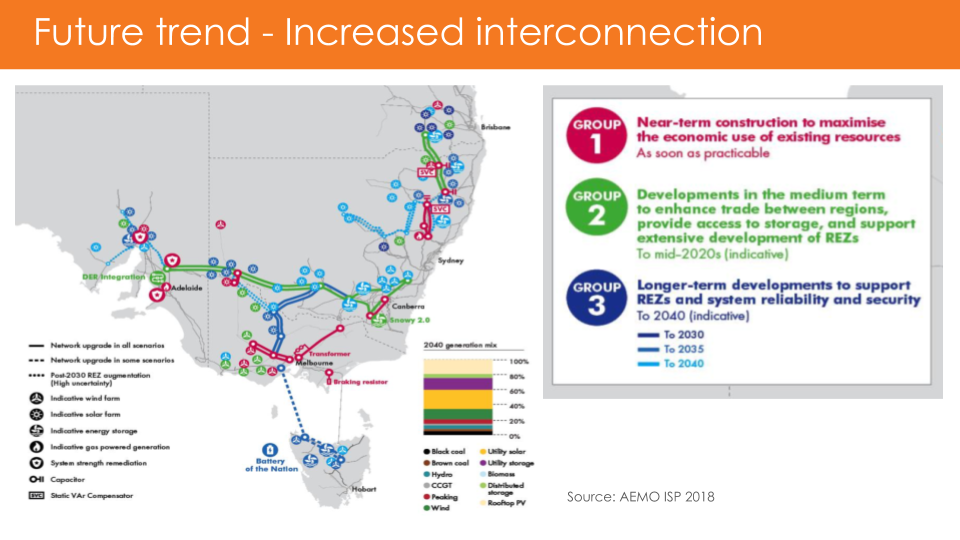
As Victoria and other jurisdictions move to decentralised energy systems there are opportunities for investment in new transmission and distribution networks. This includes major new investments to increase interconnection between states to share the benefits of renewable energy across time zones and regions.
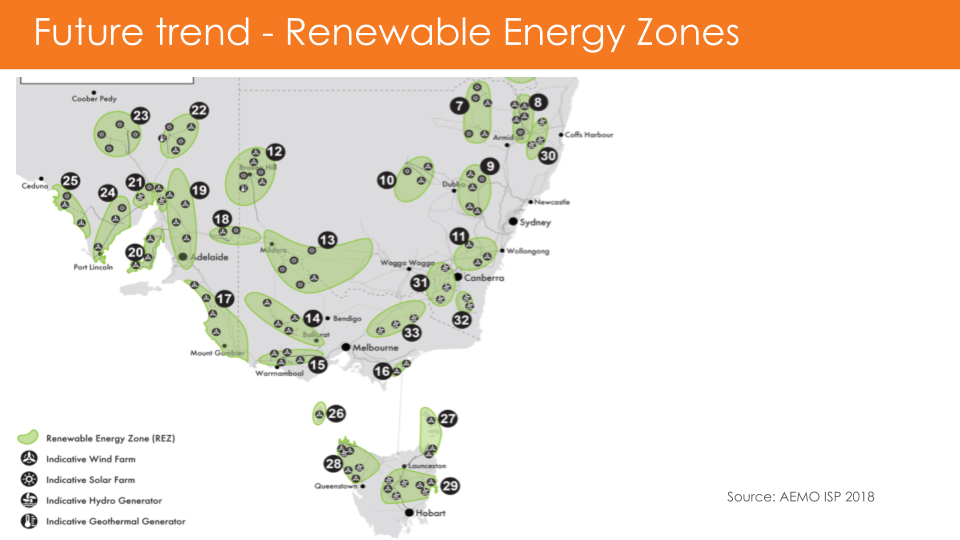
The development of renewable energy zones is an excellent opportunity to co-ordinate and integrate the wind, solar, hydro and geothermal power across Australia. These zones will help establish better mechanisms for sharing the costs and benefits of renewable energy generation and storage, including major battery farms and pumped hydro storage.
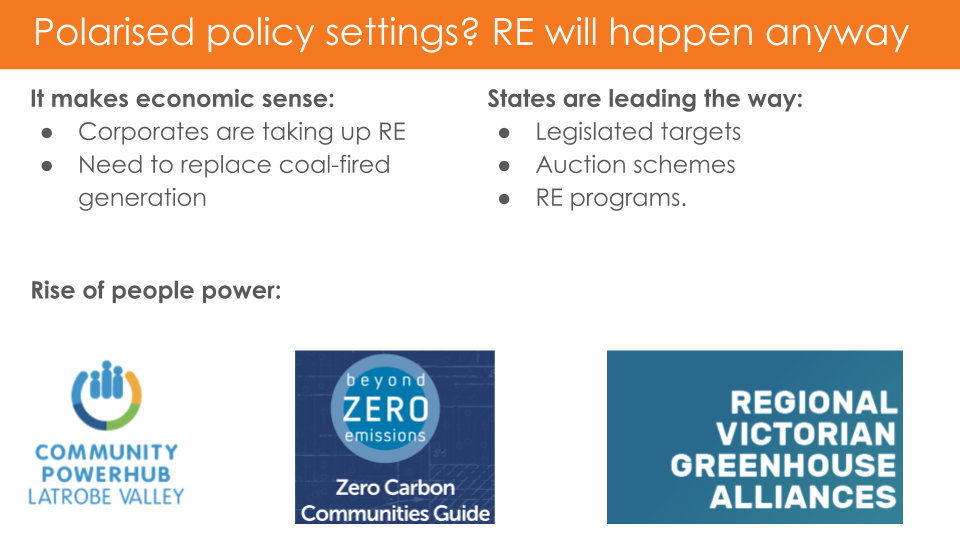
Since the Howard years, we have seen polarised policy settings with respect to climate change and renewable energy. However, the transition to renewable energy is happening anyway. Communities and citizens of Australia will continue to make the shift. It is up to governments to ensure an equitable transition which helps everyone thrive.
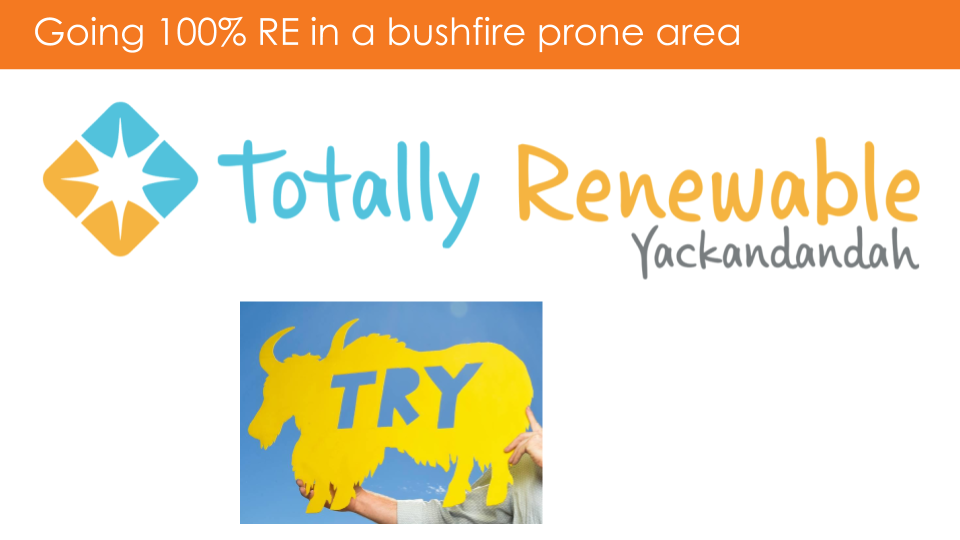
Totally Renewable Yackandandah (TRY) is an award winning community group run by inspirational volunteers in the north-east Victorian town of Yackandandah. The town is working with local stakeholders and the network business AusNet Services to achieve 100% renewable energy sovereignty. Going 100% renewable also reduces bushfire risk by avoiding electrical poles and wires or expensive underground cabling.
The views and opinions expressed in this article are the author’s own, and do not necessarily reflect those held by pv magazine.
This content is protected by copyright and may not be reused. If you want to cooperate with us and would like to reuse some of our content, please contact: editors@pv-magazine.com.
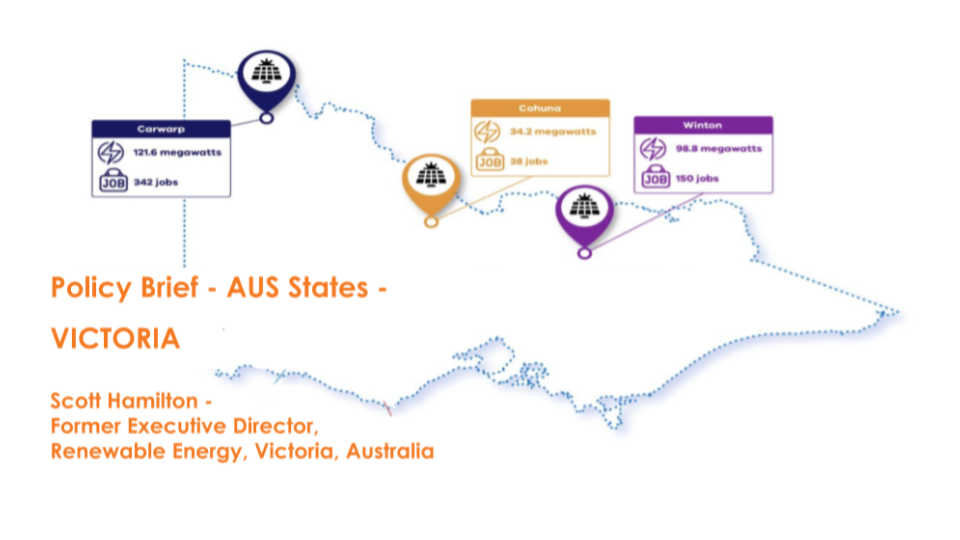







2 comments
By submitting this form you agree to pv magazine using your data for the purposes of publishing your comment.
Your personal data will only be disclosed or otherwise transmitted to third parties for the purposes of spam filtering or if this is necessary for technical maintenance of the website. Any other transfer to third parties will not take place unless this is justified on the basis of applicable data protection regulations or if pv magazine is legally obliged to do so.
You may revoke this consent at any time with effect for the future, in which case your personal data will be deleted immediately. Otherwise, your data will be deleted if pv magazine has processed your request or the purpose of data storage is fulfilled.
Further information on data privacy can be found in our Data Protection Policy.